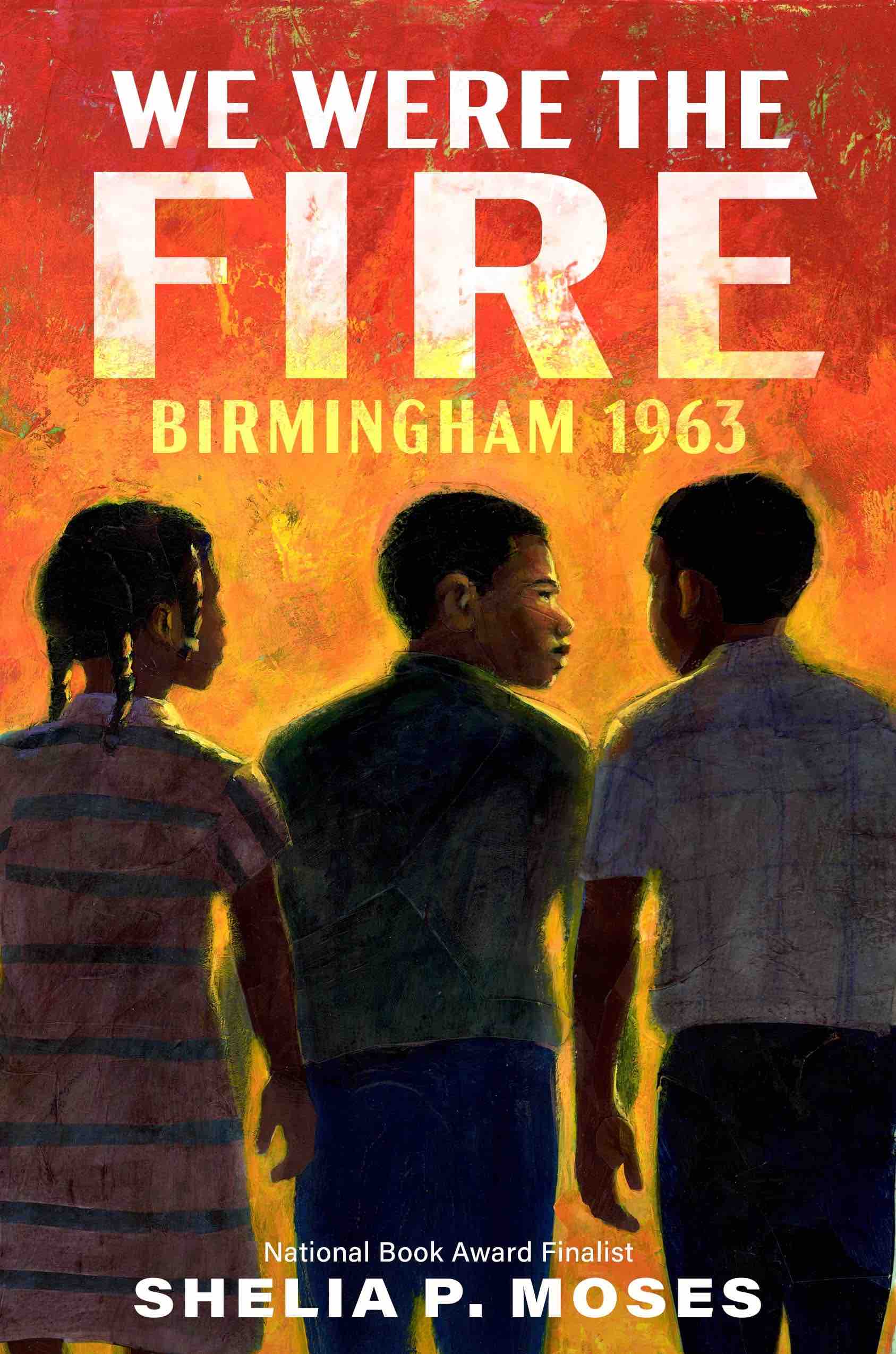 WE WERE THE FIRE: BIRMINGHAM 1963, by Shelia P. Moses, Nancy Paulsen Books, Sept. 6, 2022, Hardcover, $17.99 (ages 10-12)
WE WERE THE FIRE: BIRMINGHAM 1963, by Shelia P. Moses, Nancy Paulsen Books, Sept. 6, 2022, Hardcover, $17.99 (ages 10-12)
An 11-year-old Black boy joins the fight for civil rights in Shelia P. Moses’ new middle-grade novel, We Were the Fire: Birmingham 1963.
Rufus Jackson Jones is from Birmingham, the place Dr. Martin Luther King Jr. called the most segregated place in the country. A place that in 1963 is full of civil rights activists including Dr. King. The adults are trying to get more attention to their cause — to show that separate is not equal.
Rufus’s dad works at the local steel factory, and his mom is a cook at the mill. If they participate in marches, their bosses will fire them. So that’s where the kids decide they will come in. Nobody can fire them.
So, on a bright May morning in 1963, Rufus and his buddies join thousands of other students to peacefully protest in a local park. There they are met with policemen and firemen who turn their powerful hoses on them, and that’s where Rufus realizes that they are the fire. And they will not be put out. —Synopsis provided by Nancy Paulsen Books
Prior to reading We Were the Fire: Birmingham 1963 I had little knowledge of what is known as the Children’s Crusade of the civil rights movement. Most people probably know of the 16th Street Baptist Church bombing and Martin Luther King Jr.’s Letter from Birmingham Jail, but children also played a crucial role in the movement. (Read more about the Children’s Crusade .)
In We Were the Fire: Birmingham 1963 author Shelia Moses transports readers back to a time of segregation, fear and the will to make change happen.
At the center of her story is Rufus, a sweet kid who wants to be part of that change. As he and his family confront racism head-on, they discover unexpected friendships and allies.
Moses’ writing is warm and welcoming. She balances vitriol and hate with love and understanding. Her accessible prose and upfront manner are the perfect tone for older middle-readers.
We Were the Fire: Birmingham 1963 is both heartbreaking and heartwarming. It’s a fast read — I finished it in less than two hours — that boasts well-developed characters and settings. The strong pacing allows readers to take a breath in between harder moments while still moving the story forward.
We Were the Fire: Birmingham 1963 is one of the best middle-grade historical fiction novels I’ve read in a long time. It belongs on every bookshelf.
Children’s Crusade
“On May 2, 1963, more than one thousand students skipped classes and gathered at Sixth Street Baptist Church to march to downtown Birmingham, Alabama. As they approached police lines, hundreds were arrested and carried off to jail in paddy wagons and school buses. When hundreds more young people gathered the following day for another march, white commissioner, Bull Connor, directed the local police and fire departments to use force to halt the demonstration. Images of children being blasted by high-pressure fire hoses, being clubbed by police officers, and being attacked by police dogs appeared on television and in newspapers, and triggered outrage throughout the world.
Despite the violence, children continued to march and protest in an organizing action now known as the Children’s Crusade.
The crusade ended after intervention from the U.S. Department of Justice. The event moved President John F. Kennedy’s to express support for federal civil rights legislation and the eventual passage of the Civil Rights Act of 1964.” (National Museum of African American History and Culture)
Copyright © 2022 Cracking the Cover. Unless otherwise noted, all books — digital and physical — have been provided by publishers in exchange for honest and unbiased reviews. All thoughts and opinions are those of the reviewer.
